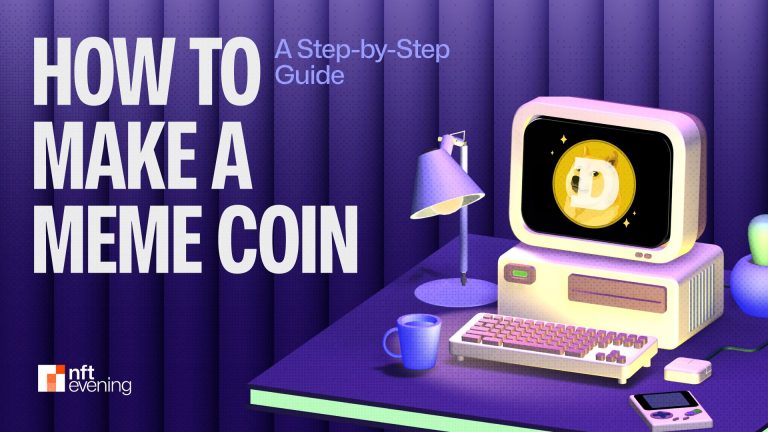In brief
- Internet capital markets involve companies raising money or promoting their business using digital-native financial instruments.
- These instruments often exhibit characteristics common to meme coins, which have no utility and are purely speculative assets tied to hype around a project.
- While advocates argue that internet capital markets are an innovative way of raising funds or generating interest in a project, lawyers caution that they currently operate in a legal grey area.
Startups and established companies are launching meme coins—and crypto degens are sending their valuations skyrocketing—in a trend known as “internet capital markets.”
In traditional capital markets, entities can raise capital by selling stocks, bonds, commodities, and more. Internet capital markets advances on this idea by implementing a digital-native fundraising tool: meme coins.
As a result, established companies like classic video platform Vine have launched multi-million dollar tokens, while emerging companies like podcasting app JellyJelly have also attracted huge market capitalizations.
What are internet capital markets?
Internet capital markets is a term that refers to companies raising money or promoting their business using digital-native financial instruments, most commonly a form of cryptocurrency.
Most of the time, the tokens have no utility and are purely speculative assets tied to the hype of a project—effectively acting as a meme coin. This is a major distinction between internet capital markets and traditional capital markets, where stocks represent a share of a company and often promise certain privileges or dividend returns.
Companies first started this novel approach to raising capital by launching meme coins via Solana launchpad Pump.fun. Rival platforms such as the Believe app have since rose in popularity as options more directly focused on internet capital markets.
“Internet capital markets is itself a powerful meme, and it’s among the most significant and OG meta-narratives and use cases for crypto,” Alon Cohen, co-founder of Pump.fun, told Decrypt. “In principle, it represents the ability to efficiently and instantly crowdsource liquidity on decentralized crypto rails.”
How did this start?
In January 2025, Rus Yusupov, the co-founder of mobile video app Vine, launched Vine Coin via Pump.fun. On its first day, the token skyrocketed to an astonishing market cap of $498 million as traders cashed in on nostalgia for the TikTok predecessor.
Days later, Yusupov posted a waitlist link as onlookers speculated that the app was going to be relaunched. More eyes and attention were on Vine than ever before, so much so that xAI bought Vine, and Elon Musk hinted at a relaunch of the app—though it’s not clear if the meme coin played a role in this move. Vine Coin is still yet to deliver any utility and has plummeted 92.5% from its all-time high.
Technically, this wasn’t the first company to release a meme coin; a wave of AI projects launched tokens in 2024, with many using them to fund their projects. However, Vine Coin was the first high-profile example that was branded as internet capital markets, with a wave of projects following suit early in 2025.
The trend slipped off the radar for several months, but was revitalized in May 2025 with the emergence of Believe as a launchpad.
As a result, new product finding tool Dupe saw its token spike to a market cap of $79 million, according to DEX Screener, before dropping 78% to $17 million. AI social media assistant Creator Buddy peaked at $23.5 million and no-code Web3 builder Uber.fun $13.7 million—down 76% and 99% respectively from their all-time highs, as of June 2025.
Why use internet capital markets?
There are two primary reasons a company may choose the internet capital markets model: money or marketing.
Most commonly, a project is looking to raise capital and will launch a meme coin to help fund its operations. This can either come in the form of selling tokens dedicated to the project—such as the Truth Terminal creator selling Fartcoin—or simply using the creator revenue fees.
This approach comes as traditional fundraising strategies are broken, 0xdetweiler, the pseudonymous founder of investment firm 3rd Street Capital, told Decrypt. He said that companies are over-reliant on venture capitalism, which cuts out regular investors from the conversation. As a result, the target audience for the product usually does not have an opportunity to invest.
In many ways, the internet capital markets trend is a repackaging of the initial coin offering movement that dominated the industry in 2017, 0xdetweiler said.
“Web3 was built on allowing founders to raise funds from the public [and] ship innovative products,” he explained. “They gain a community, capital and find product market fit. The go to market is a lot faster than traditional Web2 startups.”
But some projects don’t need capital; instead, the meme coin strategy is a marketing ploy.
For example, Russian research lab Neiry Lab told Decrypt that it had already secured venture capital funding when traders pumped a token dedicated to its rat experiment. Considering that, the lab embraced the meme coin as a marketing tool to help it grow its social media presence.
Iqram Magdon-Ismail, co-founder of JellyJelly and Venmo, said that JellyJelly attracted 10,000 signups the day that it launched its meme coin—which touched a $248.5 million market cap. The founders categorically ruled out ever selling the tokens for funding, but have since integrated it into the app as a way to tip creators on the short-form podcasting platform.
However, market participants have noted that a lot of the projects that launch under this strategy aren’t serious long-term projects worth investing in. Despite what some are calling “vibe coded bullshit” and “vaporware” products, the tokens often still pump to multi-million dollar market caps.
Good teams with good marketing and vaporware products.
We are back in ICO bubble but call it internet capital markets.
— SpiderCrypto 🧑🍳🧲 (@SpiderCrypto0x) May 14, 2025
Fortunately Matthew Nay, Senior Research Analyst at Messari, doesn’t think this is such a bad thing.
“I think it’s healthy when the market overreacts to this idea,” Nay told Decrypt. “Speculation drives prices higher, which in turn leads to more capital entering the market, and then leads to more projects being funded that want to explore these new ideas.”
Is this all legal?
It’s worth noting that in the wake of 2017’s ICO boom, the U.S. Securities and Exchange Commission cracked down on companies for violating securities laws—with several multi-million dollar victories.
With some pointing to internet capital markets as a repackaging of the ICO model, should companies be concerned about riding the hype train?
“Companies considering launching meme coins—particularly those tied to their brand or business—should seek legal guidance to assess whether their token functions as a capital raise or implies an investment opportunity,” digital asset lawyer Carlo D’Angelo told Decrypt.
“This requires a fact-specific legal analysis,” D’Angelo explained. “If the token ‘walks and talks’ like a capital raise, it may satisfy the elements of an investment contract under the Howey test and require registration with the SEC.”
That said, times have changed since 2017, with U.S. President Donald Trump clearly being more open to crypto-infused financial models—he launched his own meme coin, after all.
D’Angelo pointed to the SEC’s February 2025 staff statement on meme coins, which appears to mark a shift from its previous hardline stance against crypto. The statement claims that meme coins “may not be subject” to federal securities laws.
“The central legal question remains: does the token function as a capital raise or as a purely speculative, community-driven meme?” D’Angelo said, adding that, “The answer is critical in determining whether securities laws apply.”
Daily Debrief Newsletter
Start every day with the top news stories right now, plus original features, a podcast, videos and more.












